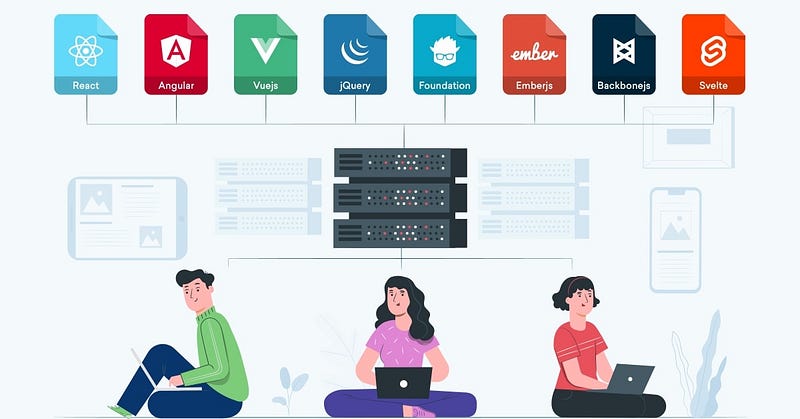5 Essentials for Building theBest Frontend Framework

The landscape of web development is constantly evolving, and building a robust frontend architecture is crucial for crafting exceptional user experiences. While popular web application frameworks can offer a foundation and expedite development, a well-structured architecture is essential for long-term success. This blog delves into five core principles that best web development frameworks adhere to, and how you can implement them even without relying solely on a specific framework.
1. Design Systems: Your Source of Truth
Imagine a world where designers and developers speak the same language. Enter design systems. These comprehensive collections of reusable UI components, styles, and guidelines establish a consistent visual identity for your application. Best frontend framework often integrates seamlessly with design systems, but you can create one independently as well.
- Benefits:
- Consistency: Ensures a uniform user experience across all touchpoints.
- Efficiency: Saves development time by providing pre-built components.
- Scalability: Makes it easier to maintain and evolve the application as it grows.
- Building Your Design System:
- Define your core components: Buttons, forms, navigation bars, etc.
- Establish your style guide: Define typography, colors, spacing, and other visual elements.
- Version control: Track changes and maintain consistency.
- Accessibility: Ensure your design system is usable by everyone.
2. Component-Based Architecture: Building Blocks of Success
Think of your application as a Lego set. Component-based architecture breaks down the UI into smaller, reusable components, just like Lego bricks. Each component encapsulates its own logic and presentation, promoting modularity and maintainability.
- Benefits:
- Reusability: Reduces code duplication and saves development time.
- Isolation: Changes to one component don’t affect others.
- Testability: Easier to test individual components in isolation.
- Implementing Component-Based Architecture:
- Identify reusable UI elements: Buttons, forms, modals, etc.
- Develop independent components: Each with its own template, logic, and styling.
- Create a component library: Organize components for easy access and reuse.

3. Asset Optimization: Speed is King
In today’s fast-paced world, users expect web applications to load quickly. Asset optimization involves minimizing the size and number of resources your application downloads, directly impacting performance. Best frontend framework often include built-in tools for optimization, but techniques can be implemented independently as well.
- Optimization Techniques:
- Image optimization: Use tools to compress images without sacrificing quality.
- Code splitting: Load code only when necessary (e.g., lazy loading).
- Caching: Store frequently accessed resources on the client-side for faster retrieval.
- Minification: Remove unnecessary characters from code (whitespace, comments).
Content Delivery Networks (CDNs): Deliver static assets from geographically distributed servers.
- Tools for Optimization:
- Image optimization tools: Squoosh, TinyPNG
- Code splitting tools: Webpack, Rollup
- Caching libraries: Cache-Control HTTP headers, Service Workers
4. Caching Strategies: Keeping Things Fresh
Caching plays a crucial role in optimizing performance by storing frequently accessed data on the client-side. Caching strategies define how and when data is cached, minimizing unnecessary server requests. Best Frontend frameworks often provide mechanisms for caching, but understanding the core concepts is essential.
- Types of Caching:
- Browser Caching: Caches static assets like images, scripts, and stylesheets.
- Application Caching: Caches dynamic data retrieved from the server.
Caching Strategies:
- Cache-Control Headers: Specify how the browser should cache resources.
- Service Workers: Enable advanced caching capabilities like offline functionality.
- Benefits of Caching:
- Improved Performance: Reduces server load and improves responsiveness.
- Offline Functionality: Allows users to access certain features even without an internet connection.
5. Performance Measurement and Optimization Tools: Diagnose and Conquer
Just like a car needs regular maintenance, your web application requires performance monitoring. Performance measurement and optimization tools provide valuable insights into how your application performs and identify bottlenecks that need improvement. While popular web application frameworks often integrate with these tools, they can be used independently as well.

.png)

Comments
Post a Comment